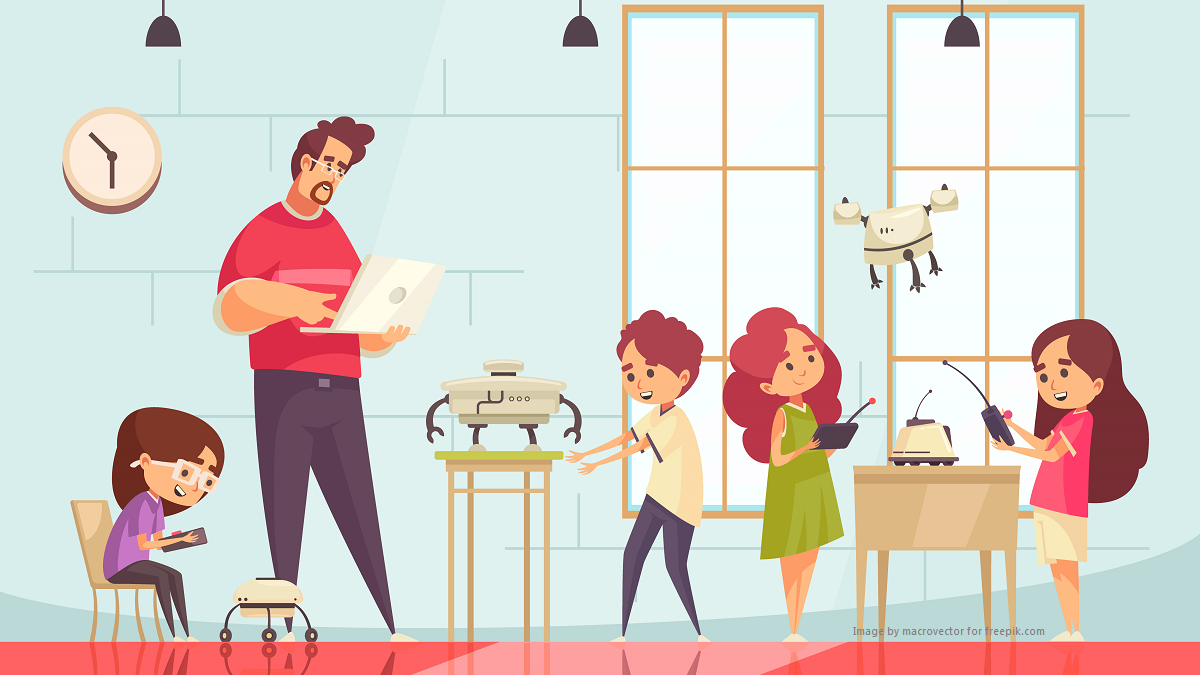
We are living in an age of Gen Z-ers who, as digital natives, are in tune with technological advances in communication such as social media, gaming, and conducting research almost exclusively using the internet. Their avenues for engagement are changing and teachers who are increasing STEM (science, technology, engineering, and mathematics) instruction in their classrooms are exploring ways to incorporate more hands-on, immersive learning experiences that combine innovative technology with real-world connections. The motivation for doing so? To see their students’ active participation in experiments and projects, as well as strengthening the four Cs to 21st-century skills: Critical Thinking, Collaboration, Communication, and Creativity.
Teachers have a variety of ways to help them expand what they already do with STEM. More teachers are including the study of robotics in their STEM curriculum because it introduces students to coding and programming. As students work through these key tech skills for building their robots and directing their movements, they’re also growing their “4 Cs” skills. Let’s look at how.
Robotics and the 4 Cs
Critical Thinking encourages students to find the facts and figures to support a prediction or statement on their own. There is no spoon-feeding here – students are asking and answering their questions, working thoroughly through problems. With robotics, students must identify a need, think about what their robot can do to meet the need, then design the robot. Students learn important coding skills to program their robots so that they make the movements anticipated. There is trial and error involved, and students will learn to accept some failures, learn from them, and move on to developing different solution possibilities.
Collaboration involves students interacting and cooperating with others, a skill they’ll need as they enter the workforce. When students work in teams, they must understand how to address problems, present solutions, and decide on the actions needed to reach a resolution. As teams work together to design solutions using robotics, they have to discuss problems and be willing to accept feedback and, at times, criticism. As they collaborate, they learn that different ideas can bring something unique to the table and possibly improve on a design. Collaboration in teams carries over to collaboration as a whole class and working with the teacher during class discussions on concepts, skills, and procedures being learned.
Communication goes beyond being able to talk with someone or verbally express a thought. During a group discussion or team task, students need to understand how tone, facial expressions, body language, and eye contact all influence respectful communication. They should also know how to share their thoughts efficiently, focusing on the issue at hand, without going off on tangents that will distract. When working with others on a robotics project, which includes writing code and deciding on programming, communication is key so that everyone is on the same page with the team plans. If something doesn’t work, members should continue to empower one another to keep trying and move through challenges and trials.
Creativity can become an inherent outgrowth of the three previously mentioned skills – by collaborating and communicating with others about a problem that required critical thinking and analysis, students can think about solutions more creatively and ‘outside of the box.’ Students will learn to look at a problem from varied perspectives, and when they share, they will encourage one another to also look at the solutions creatively and try different approaches to find a solution.
It can be daunting for teachers to plan quality robotics projects wherein students are strengthening key 21st-century skills. Many education-focused companies have developed robotics programs that can help teachers “take baby steps” by integrating this specialized study into their lesson planning. One such STEM solution is the Mimio MyBot by Boxlight. The MyBot robotics system makes robotics and coding simple to learn, minimizing the frustrations that might come with incorporating robotics projects. If teachers hesitate because of the idea of teaching coding language, MyBot starts with a drag-and-drop environment and students can advance skills over time. Watch the video for more about MyBot coding:
The MyBot system also includes a range of educational content including lessons developed by the award-winning MyStemKits STEM curriculum. MyStemKits.com is a repository of STEM activities, lessons, and Design Challenges for 3D printing, robotics, and sensors. The MyBot system also comes with training and short videos to help teachers build skills and confidence about using robotics as part of their STEM instruction.
Mimio MyBot has also partnered with ShareSpace Education, a key program of the Aldrin Family Foundation, so that students in grades 4 through 8 have innovative learning experiences while exploring the wonders of space. For more on this STEM bundle, click here: Mimio MyBot and ShareSpace. You can also watch this video:
Incorporating robotics education in the classroom, even as early as kindergarten, will engage this generation of digital natives who see technology as the only way of life. By showing them how they can apply this type of technology to real-world challenges, they may even see themselves as future innovators in the STEM field.
For more on Boxlight MimioSTEM solutions, including the Mimio MyBot robotics system, go to boxlight.com/stem-education.




